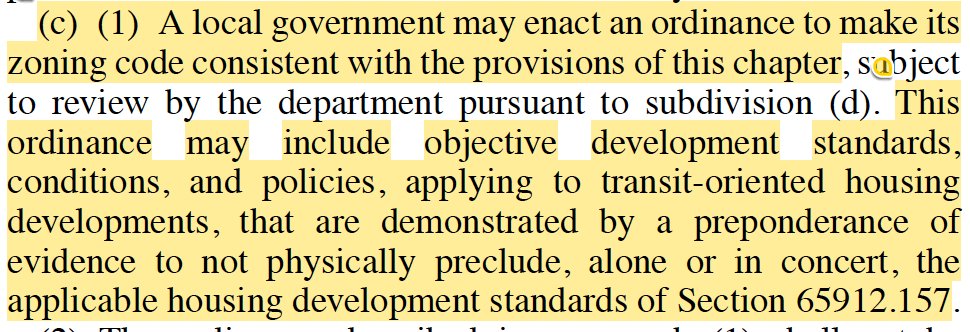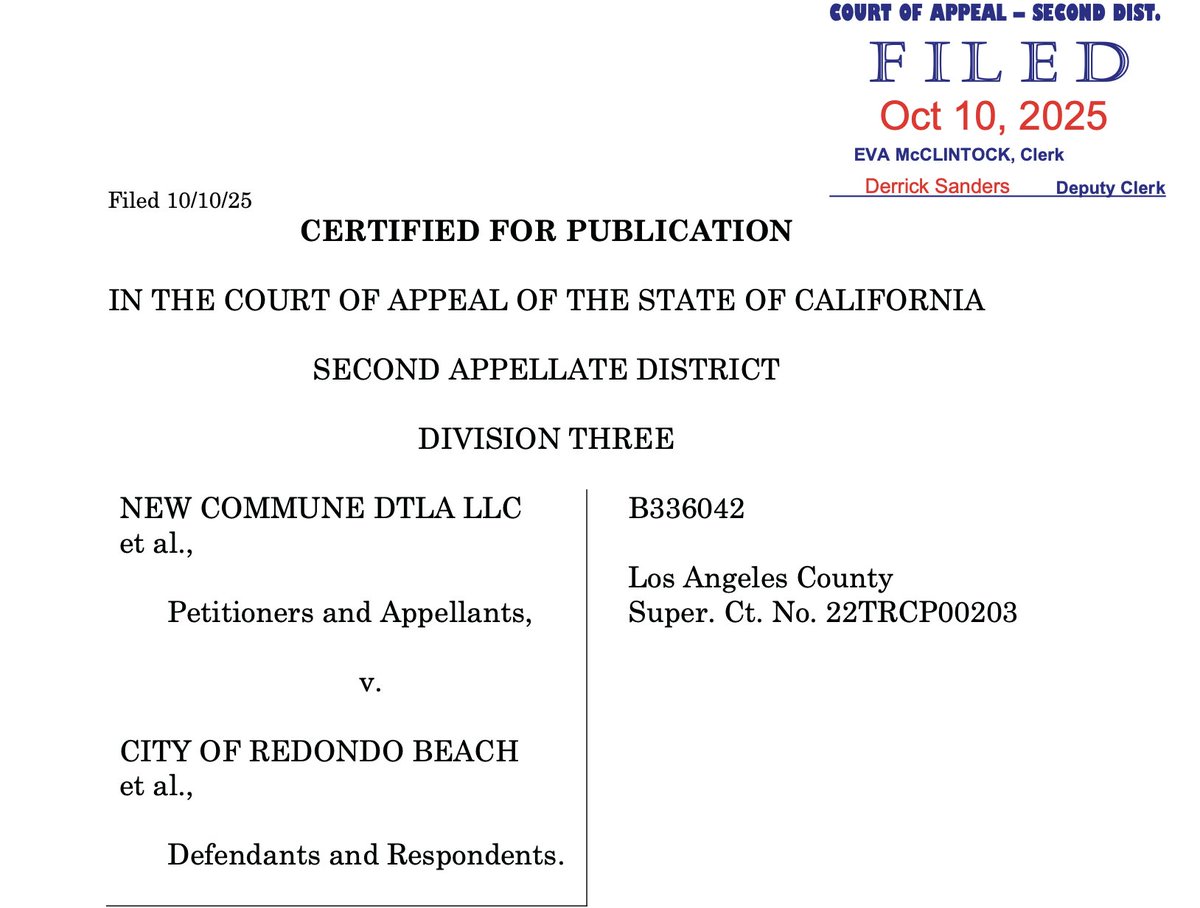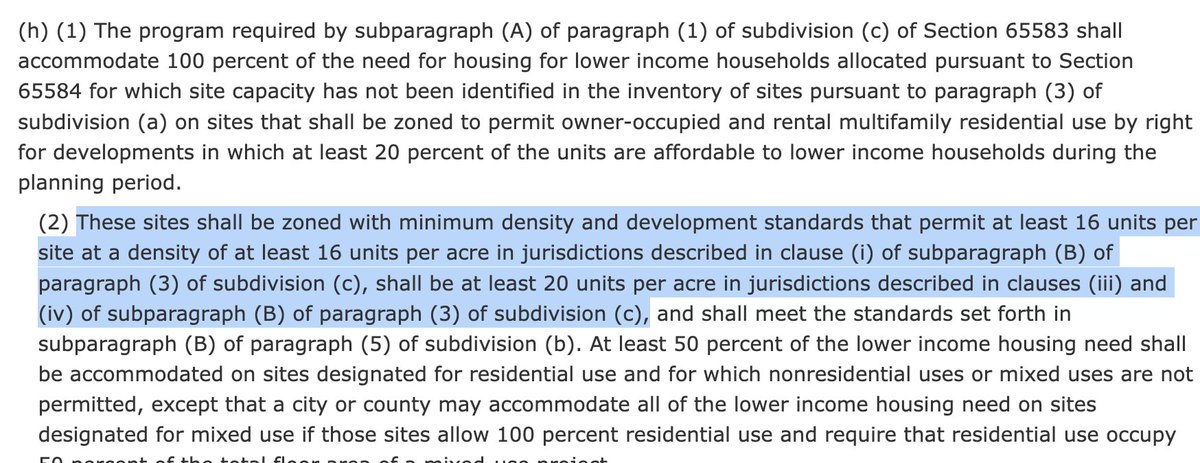SB 79 Thread #5.1: Advice for the Legislature, short term.
Leg needs to pass an SB 79 cleanup bill as part of the next budget, i.e., a cleanup that takes effect on 7/1/2026.
This thread addresses the cleanup; SB 79 Thread #5.2 will look to the future.
1/8
Leg needs to pass an SB 79 cleanup bill as part of the next budget, i.e., a cleanup that takes effect on 7/1/2026.
This thread addresses the cleanup; SB 79 Thread #5.2 will look to the future.
1/8
https://twitter.com/CSElmendorf/status/1966910007141867675
The cleanup is needed b/c SB 79 tells @California_HCD to "promulgate standards" by 7/1/2026 for counting SB 79 capacity toward RHNA, yet (unlike other laws conferring standard-setting authority on HCD), it doesn't exempt HCD from the Administrative Procedures Act.
/2
/2

The Cal APA's notice-and-comment requirements are notoriously cumbersome, far worse than those of the also-very-cumbersome federal APA.
There's not a chance that HCD gets it done through the Cal APA process by the deadline.
/3
There's not a chance that HCD gets it done through the Cal APA process by the deadline.
/3
HCD could try to invoke the "emergency" exception from notice & comment, but I don't think the emergency criteria would be met.
Missing a statutory deadline does not cause "serious harm to the public peace, health, safety, or general welfare."
/4
oal.ca.gov/emergency_regu…
Missing a statutory deadline does not cause "serious harm to the public peace, health, safety, or general welfare."
/4
oal.ca.gov/emergency_regu…
Also, as I explained in SB 79 Thread #4, local governments should want HCD to issue clear guidelines re: HCD review of SB 79 implementation ordinances & Eckhouse plans.
Those guidelines would also violate the Cal APA unless ratified by Leg.
/5
Those guidelines would also violate the Cal APA unless ratified by Leg.
/5
https://x.com/CSElmendorf/status/1977775599717675505
While the Leg is at it, here are my other suggestions for a trailer bill:
Local implementation ordinances / Eckhouse plans should be required to:
- Declare FAR/density/height allowed in each zone & waive local rules that "physically preclude" it (like SB 79 default rules).
/6
Local implementation ordinances / Eckhouse plans should be required to:
- Declare FAR/density/height allowed in each zone & waive local rules that "physically preclude" it (like SB 79 default rules).
/6
This isn't (now) an explicit requirement of SB 79. Instead, cities must show by "preponderance of the evidence" (tough!) that local dev. standards don't physically preclude allowable density/height/FAR.
I don't see how cities could make that showing as to every parcel.
/7
I don't see how cities could make that showing as to every parcel.
/7

A legally binding commitment to grant waivers when necessary obviates the need for cities to make parcel-by-parcel showings that local dev standards don't preclude the nominally allowed density/height/FAR.
/8
/8
- Grant SBDL waivers & extra concessions on same terms as the SB 79 default rules (GC 65912.057), i.e., no height waivers but everything else OK.
Again, this isn't (now) an explicit requirement of SB 79 w.r.t. Eckhouse plans. But I presume it's what the Leg intended.
/7
Again, this isn't (now) an explicit requirement of SB 79 w.r.t. Eckhouse plans. But I presume it's what the Leg intended.
/7
I have a few other minor suggestions, but they're so small bore as to be unworthy of a thread.
HCD, cities, & housing advocates will surely discover other things that would benefit from clarification too.
Making SB 79 clearer is good!
/end
HCD, cities, & housing advocates will surely discover other things that would benefit from clarification too.
Making SB 79 clearer is good!
/end
https://x.com/CSElmendorf/status/1977775601273729153
Should also have pointed to my earlier threads on legal ambiguities in SB 79. (No doubt many other ambiguities will turn up as cities & HCD begin implementing it.)
- x.com/CSElmendorf/st…
- x.com/CSElmendorf/st…
- x.com/CSElmendorf/st…
- x.com/CSElmendorf/st…
@threadreaderapp unroll
• • •
Missing some Tweet in this thread? You can try to
force a refresh














